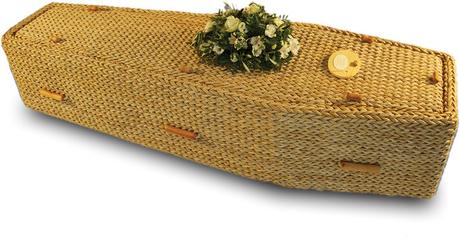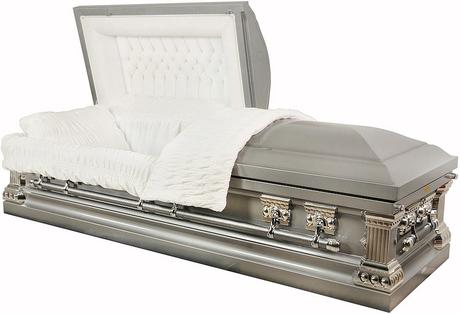The casket industry traces its roots back to ancient Egypt and Mesopotamia, where wood, cloth and paper were used to make sarcophagus-style burial boxes. Coffins, or funeral caskets, are containers in which the dead are buried.

Burial practices differ markedly across cultures and through history, but many people's have used wooden, stone, or metal boxes for burial. Beautifully decorated stone boxes called sarcophagi were used in ancient Egypt. Stone coffins were also used in Europe in the Christian era, and later lead or iron coffins became common. Only wealthier people could afford elaborate coffins, and in Western cultures since the Middle Ages, poorer people were buried in simple wooden boxes. The very poor had no coffins at all, and might be laid in the grave wrapped in a blanket. The coffins are said to be carved by the elderly before they die. If an elderly person is too weak or ill to do so, his/her son, or a relative would do it for him/her. When the person dies, he/she is placed in the coffin in a foetal position. This is due to the belief that a person should exit the world in the same position that he/she entered it. After being wrapped up in blankets and tied with rattan leaves, the corpse is carried to a cliff in a procession. During this procession, mourners attempt to grab and carry the corpse.

This is due to the belief that it is good luck to be smeared with the blood of the deceased, since it would allow a person to possess the skills of the deceased. After reaching the site for the burial, the corpse would be placed in the coffin and tied or nailed to the side of the cliff. One of the most important objects purchased, whether for royalty or other elites, for a tomb was the coffin. It's purpose from the earliest times was the protection of the body, preserving it from deterioration or mutilation. During Predynastic times, the Egyptians shrouded corpses in mats or furs and enclosed them in pots, baskets or clay coffins. In some areas a wooden scaffold was constructed around the body, and this might be considered the precursor to actual coffins. The mummy and painted wooden coffins probably originate from Thebes (modern Luxor) in southern Egypt. The only clues to their origin and the mummy's identity are the inscriptions on the coffins, which give her name as Asru and her status as married, and identify her as a priestess of Amun. Only about one per cent of ancient Egyptians could afford mummification; this fact, and the quality of her coffins, indicates that she came from an upper class family.

Published by Vikas Acharya
My name is Vikas Acharya, I'am a passionate, optimistic and dedicated man who takes up responsibilities with utmost enthusiasm and see to it that I complete my tasks and assignments in time. I'have a great amount of perseverance to achieve my goal. My optimistic and planned approach in things I do is what driving me towards my success. I am a freelance writer, ghostwriter, and Blog-writer. Contact me to find out how I can help you create high-quality blog content, lead magnets, ebooks, and web copy for your business. I have worked with a wide range of organizations including Internet startups, advertising agencies, and various websites. From widely distributed press releases and blog posts, to targeted letters , I ensure customer satisfaction in everything that I do. well-known brands and publications including Tata Capital, Realtycompass, CondomBazaar, You Tube, Myntra, Asus Mobile, Delmonte Foods, Airtel, Dabur, The Dance Bible, UB Group and many more. Note: I have collected all the articles from web through various websites, may be some articles are written by me and others are the collection of another website/author, I have no © on some of these images/articles. If you find your image/article which is copyrighted mail me to [email protected] we'll remove them within the next 48hrs. View all posts by Vikas Acharya
